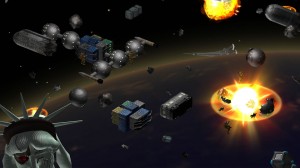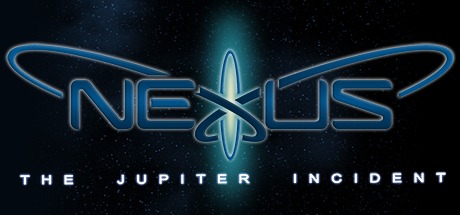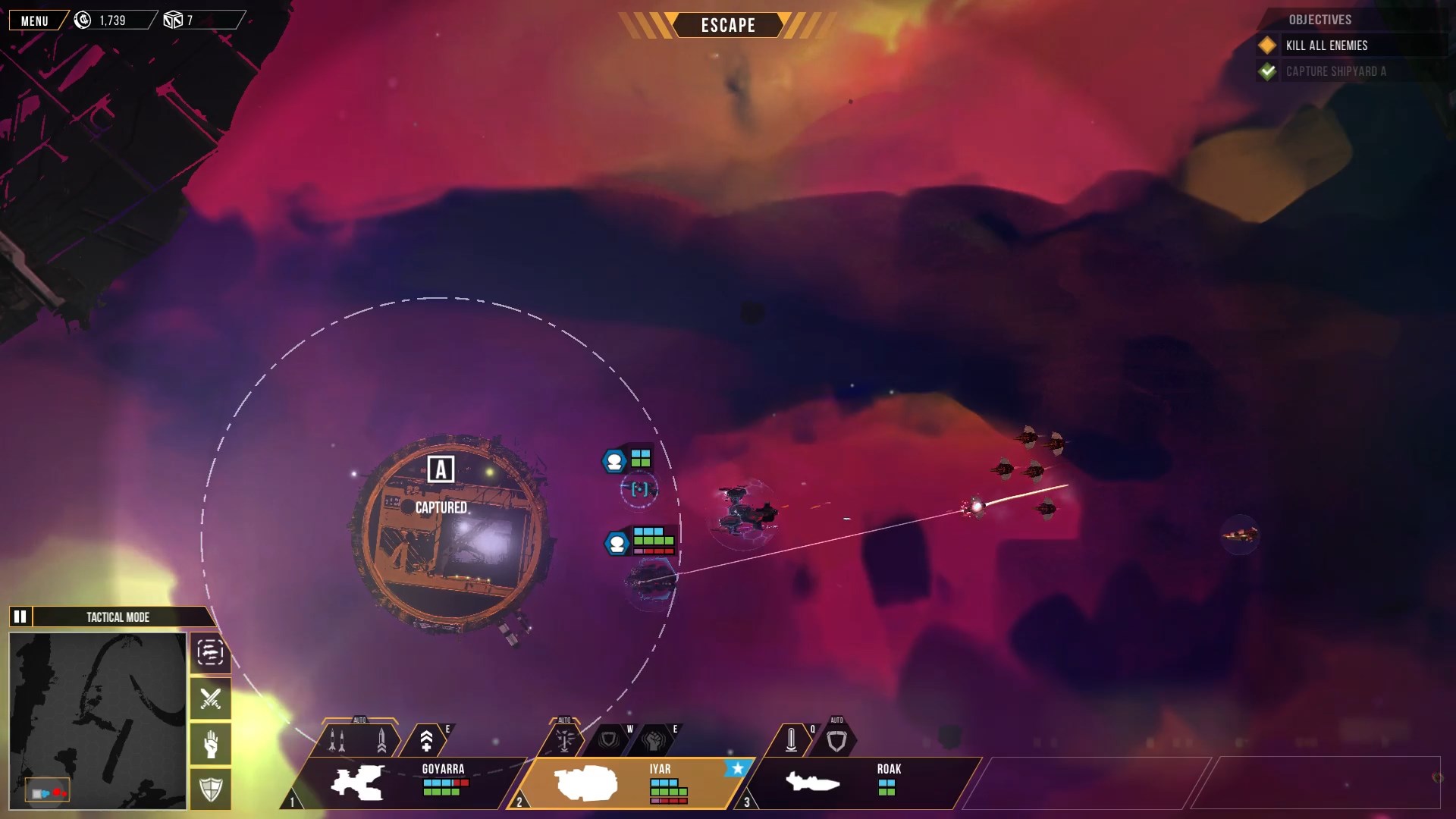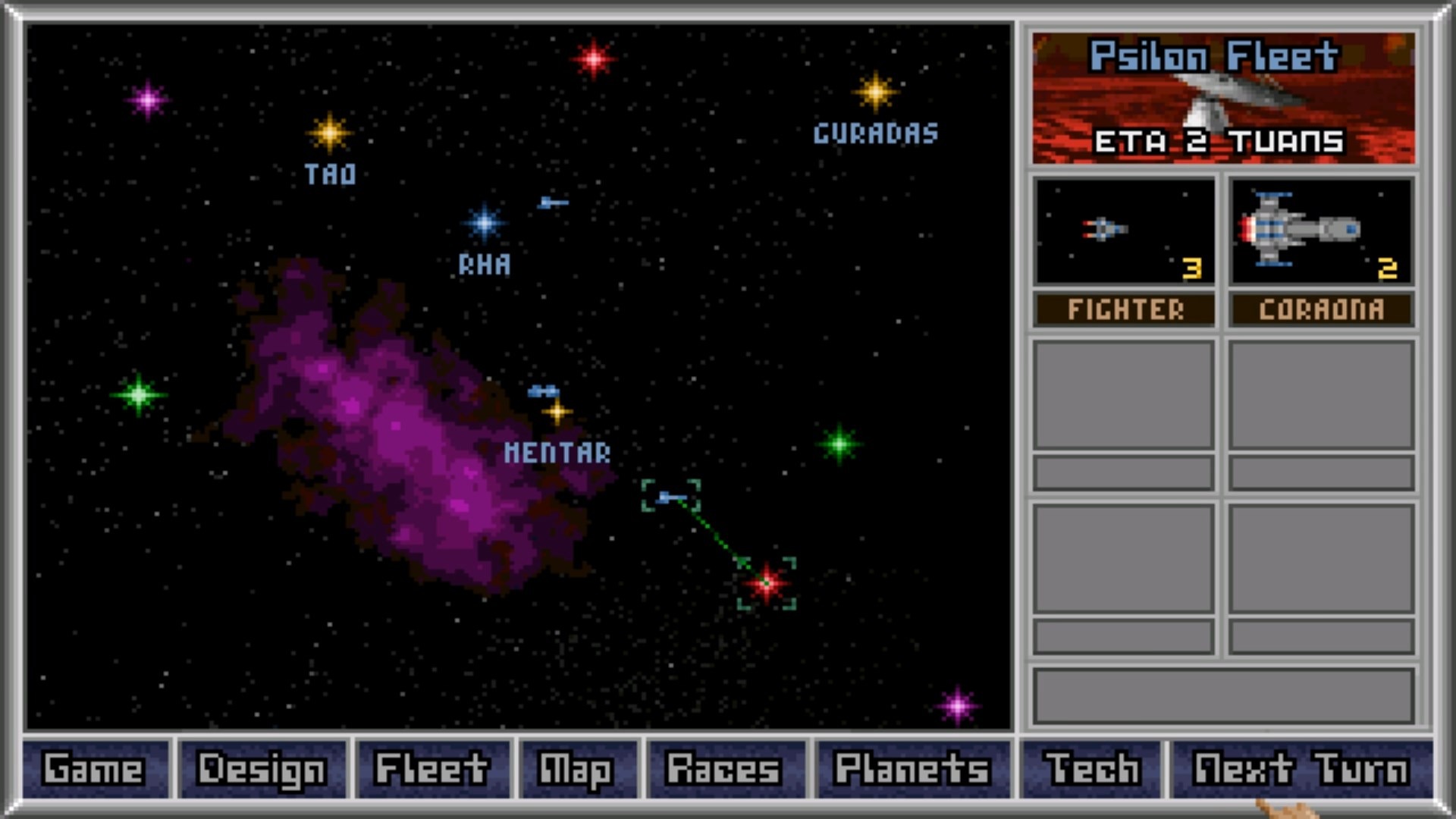
About a week ago, I was contacted by the folks behind Habitat telling me about their game and their Kickstarter, which is almost wrapping up as I type this. At the time they wrote me they were sixty percent funded, but now they’ve passed their funding goal, so congrats to them! Why the support? Because it’s a nifty looking orbital survival and combat game that involves realistic physics in the best way possible: throwing big things are you enemies and then watching ’em blow up. ;) It’s a fun looking game, so of course I wanted to learn more. Therefore please enjoy my Q&A with the creator of the campaign, Charles Cox, after the cut, and if you like what you hear, kick ’em a few bucks. ;) If I can, you can. ;) Enjoy!
Brian Rubin: First off, for those unfamiliar with the project, could you please describe what Habitat is?
Charles Cox: Habitat is a real-time physics-based strategy game set in Earth orbit, where you build, upgrade, fly, and fight with space stations you build out of orbital debris – better known as space junk.
BR: Where did the idea for Habitat come from? It’s pretty unique as far as I know, as most games don’t restrict themselves to one specific area (orbit, in this case).
CC: In early 2013 I took my first trip to the Smithsonian Air and Space Museum in Washington D.C. While I was there, being in such close proximity to our struggles and triumphs in space – as a species, really – a lot of things came together in my head. By that afternoon I was sketching out a game where there were space stations on the opposite side of the earth, firing rockets and all kinds of things at one another. But I knew it could grow much bigger than that.
BR: Since this is a game that takes place strictly in planetary orbit, has that created any unique challenges for you as you create the game?
CC: It really has – there are a million micro-decisions we make every day as we build the game out, trying to keep in mind the needs to balance fun with accessibility with realism. Orbit is a very strange place, and it’s odd to think of the Earth itself as not being “friendly” when we’re so used to it being terra firma in almost every game or story we’ve ever consumed. I think one of the most unique challenges for me has been building the notion into the game that you want to stay up here in orbit when it’s normally such a deadly environment.
BR: It appears as if the primary objective is to build stations, or habitats, out of junk floating in the atmosphere, and then to protect those habitats as you both build more and attack those of your enemies. This sounds like it could become very unwieldy, so how have you designed the UI to help the player manage all this?
CC: You’re right – it’s serious business up in orbit, and we need to make sure our players get access to all the info they need and can quickly respond to issues without getting frustrated. We have a good input mechanism, I think – a branching contextual action tree so players always know how to take action. Our next step is to build out more of the outputs like a minimap and list of habitats with quick-status icons so the players can know at a glance which habitats of theirs are under attack, on fire, etc. We’ve been conservative about using screen real estate so far because we know as the game grows, the information management needs will grow, too.
BR: Will everything be manually managed by the player, or will the player be able to, say, assign an AI commander to a specific station so they can manage or protect it as best they can?
CC: As the player’s network of Habitats grows it makes sense that they won’t want to do everything themselves. At a minimum we will have some stable-state options the player can kick in once they unlock it on their tech tree – but we want to go further than that! We have a stretch goal in our Kickstarter campaign to allow the player to program AI into their habitats ala Mind Rover or the old PS1 game Carnage Heart where you specify if-then conditions to make the Habitat take action on its own. We’ll see if we can hit that goal; it’s pretty geeky and my favorite particular stretch goal!
BR: Now in the campaign mode a nanobot army is apparently attacking Earth and it’s up to you to save it. Could you expand upon what will be included in the campaign mode, such as what types of missions we might encounter, some background on when this takes place and so on?
CC: The campaign mode is set in the year 11,000 when Earth’s future denizens set loose a plague of nanomachines that start consuming the entire planet. Whoops. We can’t really fight an enemy like this, all we can do is run. So the Habitat project is born – humanity straps booster rockets on everything they can and fires it up into orbit for you to use.
In the campaign the player’s overriding objective is “save humanity”. That means building up as much livable space as possible, taking on board shuttles of citizens sent up from earth, and defending against the harshness of space. But, of course, things don’t stay that simple for long.
As the player demonstrates mastery of building and maintaining habitats, dealing with crises like onboard fires, virus outbreaks, stranded astronauts and more, the next act of the campaign is unlocked. The nanomachines start to attack from earth and as the junk in low orbit begins to be used up by the player, they need to look further out, to the next ring of debris further out. That’s when we turn up the heat by introducing enemy habitats, so the player has to maintain an offensive and defensive force – and has the option of expanding via salvage or whole habitat takeovers.
In the third and final act of the campaign the player goes one step further out to the “graveyard” orbit where they discover some truly bizarre technology – and the mechanism by which they’ll be able to escape the nanomachines and find a new Earth to colonize. I don’t want to give away too much of this part – it’s the ending, after all!
BR: Can you also expand upon the two mentioned game modes, the campaign and the sandbox, and tell us what we can do in each?
CC: Campaign mode is really meant to be a narrative-driven experience. You’ll get the chance to build, upgrade, fly and fight in a relatively free-form way but as you reach certain levels or locations more parts of the story will unlock and drive you forward. We still aim to achieve quite a bit of freedom for the player in how they play, the narrative is there to keep upping the stakes.
Sandbox mode is a more creative experience. The entirety of the game world is open and free to build and play in; enemies like the nanomachines and enemy habitats can be turned on or off depending on the player’s preference. There’s still a progression of technology and upgrades but the player is free to move forward at their own pace.
Both modes are played in a procedurally-generated world of junk fields so each time the player selects “New Game” they can get a brand-new experience.
BR: Can you expand on how new items and technologies get unlocked in the game as you play it?
CC: There are three systems that work in interconnected ways. There are connection bonuses you can get by connecting certain types of items together to unlock additional functionality. Think something like connecting a superconductor to a radar dish and unlocking its use as a resonance weapon. There are research points that you get the more citizens you have in your habitats and you can choose to spend them on either individual upgrades to components of your habitats, like supercharging individual rockets on board, or you can spend them to unlock global upgrades on a technology tree. We’ll be defining these upgrades as we take player feedback during the Alpha.
BR: This game looks like it handles physics in a fun way, what can you tell us about the engine running this game that allows all of these objects to be modeled realistically in this physics playground you’ve created?
CC: We’ve built this game in Unity, and the onboard PhysX system has been doing an incredible job with all the tasks we put on it. We;ve melded in a bit of our own code for the habitats themselves – we manage collisions and ripple effects of damage across the connections between components, so we can have finer control over how these stations rip apart. By far the most gratifying part has been watching how the rockets work in flight – they’re a ton of fun and the heavy lifting is done by PhysX, so we can focus on integrating them into the game in a fun way.
BR: Can you elaborate on how the debris fields we’ll be fighting and building in will be procedurally generated?
CC: Our random field generator is actually up and running right now in a very early state. The key design we’re following is “islands” of junk, rather than a uniform distribution. This gives a good mix of stay-and-build and pick-up-and-move mechanics so the game stays interesting. You’ll be able to specify the size constraints and density for the islands – I’m sure we’ll find lots of other levers we’ll expose in the generator – and out pops a world. In the campaign, of course, the types of debris that are in the fields are restricted based on their distance from earth, but in sandbox mode we’ll probably ease that restriction so that you’ll find an even more randomized assortment of stuff at all distances.
BR: Will the game be moddable at all, or have any other method of expanding or extending gameplay beyond the campaign and sandbox modes?
CC: We really want Habitat to be a game that the community loves and supports. Modding support is something we really want to build but we can’t promise it at our initial funding level – it’s a significant rearchitecture for a small team like ours – so we made it a stretch goal. With the help of the community we’ll get there!
BR: What is planned for the post-release DLC for the game?
CC: Right now our plans are to create some interesting graphical and feature conversion packs; not confirmed but we have been toying with a 1960’s alternate reality that’s US versus the USSR struggling for control of an orbit that was once the home of an alien species. I think I played too much C&C Red Alert as a kid, maybe, but I think it’d be pretty great to be able to build that. Whichever way we go, I want it to be a good mix of new debris and new technology so there are new combinations of gameplay that people don’t expect.
BR: Finally, what makes you most excited about building this game?
CC: I can spend all day in my own head thinking about what this game could be – in fact, I do it all the time – but the most exciting thing is when people play the game. Even with this early demo, watching people’s eyes light up when they see how it works, the sense of pride and creativity they have when assembling a station, and hearing them laugh when something crazy happens, that’s more exciting and gratifying than anything I’ve ever experienced in my life. It’s that feeling, and that support, that confirms to me that Habitat is a game that has to be made.
It’s why we launched our Kickstarter. It’s why we’re here. And it’s why we’re going to keep going.



